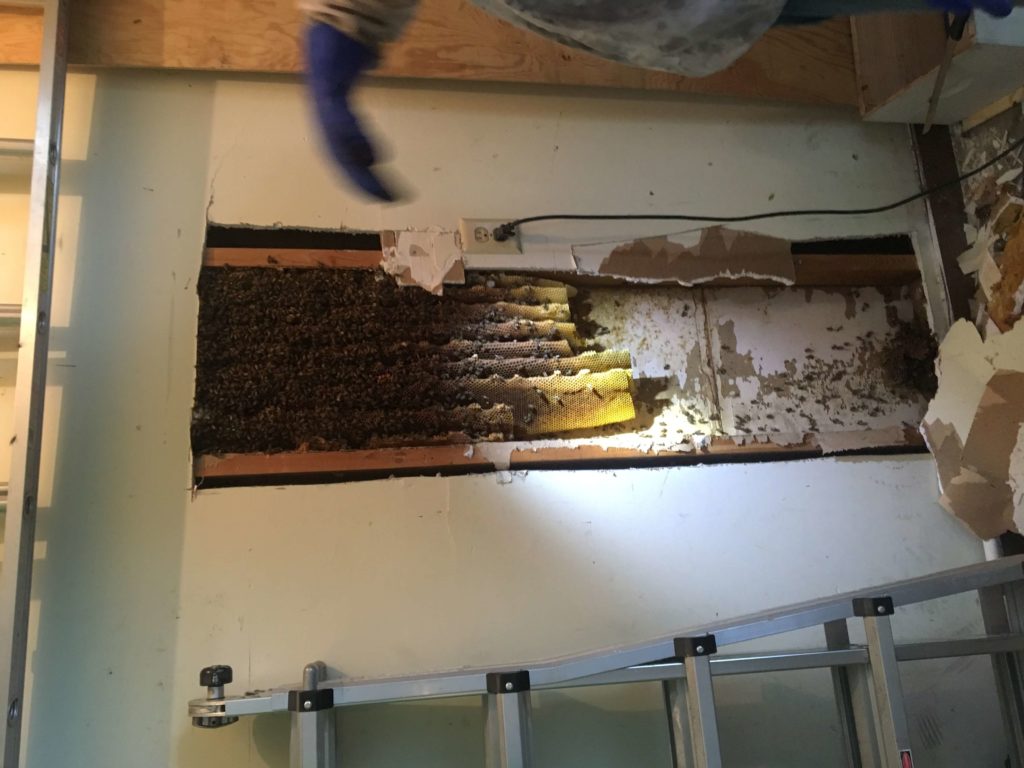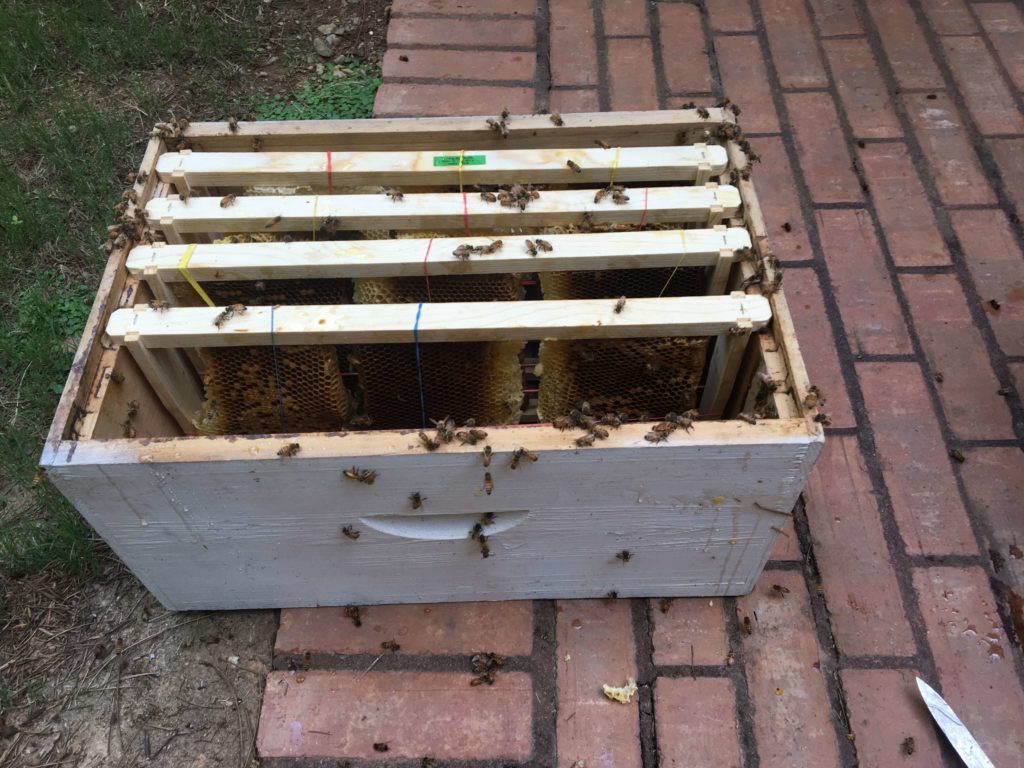How many species of bats are there
June 6, 2016Bat Removal
July 18, 2016Stinging insects, like bees, wasps, and hornets, bring fear to many when you find them. For some, it also comes with the risk of allergic reaction. However, discovering a honeybee hive doesn’t mean you have to resort to bug spray and poisonous insecticides to remove a honeybee comb from your home or office. In fact, there are some huge benefits to relocating it, including the chance to give bees a new life providing honey and pollinating important crops. Bees are one of the many pollinators in the world. A pollinator transfers seeds and pollen from one plant’s flower to another. This action fertilizes the plant so it can produce food. It is estimated that pollinators are responsible for 30% of the cross-pollination required to produce food crops.
Bees at Risk
Worldwide bee populations are at risk due to a syndrome called colony collapse disorder. Scientists believe that a warming trend, pesticide use near honeybee colonies, habitat loss and parasites & fungus are the root causes of this phenomena. Many of our fruits and vegetables rely on bees as pollinators, and would not survive without them. Tomatoes, strawberries, squash, peas, and the famous Georgia peaches all need bees to survive, along with many other fruits and vegetables. Basically, if it has seeds, then it needs bees. As a bonus, honeybees provide an important crop all on their own. Honeybees make honey by collecting nectar and removing moisture from it and storing it in the comb.
Finding a Honeybee Hive
In nature, honeybees live in cracks and crevices, often in rotting trees. If there is a gap in your home construction, they can find their way into your walls and form a nest in the walls or under your eaves. When a honeybee colony takes up residence in your home several problems can come with it. First off, there is a safety concern with honeybees. People are allergic, if one bee stings someone allergic to bees, they could possibly die from just one sting. On average, 50+ people die every year in the US alone. Other insects are attracted to the honey the bees make. Another issue is the weight of the honey in the walls. Beekeepers have found ways to transplant hives and retain colonies, and those same techniques can be used to move a hive safely out of your home and relocated to a place where it is needed.
How it Works
When a honeybee nest is found the first step is to determine the size of the nest and the complexity of the removal. This first step may involve drilling a few holes in the drywall, pulling back carpet or other light demolition. Then, an extraction plan will be made, it will involve cutting into something on your building in order to get to the comb. During removal, bees are typically vacuumed into a collection bin and stored for transport. Then the hive is removed, and any usable portions of honeycomb are transplanted onto frames that go into a bee hive box. Hives are moved to a bee farm or other safe location with the bees where they can go about their activities in a location that is safe for them and for humans. Finally, your home is repaired and sealed to prevent any more bees.



